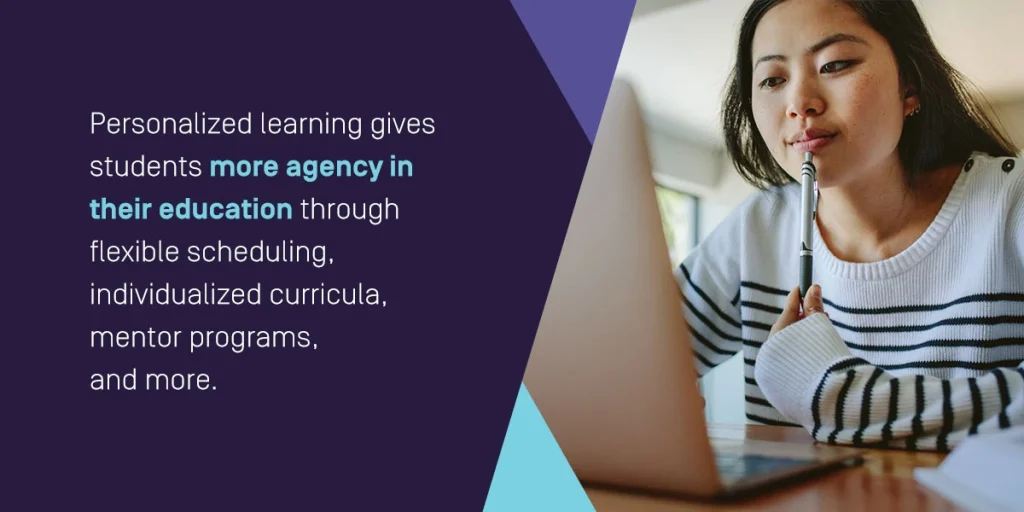




It’s generally more profitable to retain existing students than it is to enroll new ones. But when only 59 percent of students graduate from their original institution, it’s clear higher ed can do more to help.
There are many ways higher education institutions can reengage students who are facing challenges with their coursework. Collecting and analyzing data from internal databases can help your institution make data-driven decisions on what improvements will work best for you.
Higher education institutions play a big role in making sure their students don’t fall through the cracks. Here are some of the ways you can help struggling students graduate on time:
Your faculty are the first line of defense in identifying students who are struggling, and building a strong rapport with students early on is essential. Faculty members at most institutions already provide valuable resources such as office hours and supplemental instruction opportunities, but many of these solutions are passive.
Taking an active approach to student interaction can help ensure students use the resources you offer them. For example, instructors can personally reach out when they notice a student’s grades slipping — this kind of interaction can foster a stronger sense of belonging and motivate them to get back on track.
While most higher education institutions offer a range of student support services, few students actually take advantage of them. Typically, this reluctance to seek help stems from several false beliefs:
Encouraging students of all backgrounds to take advantage of these services can help them realize that these attitudes are unrealistic, increasing the likelihood they will get the assistance they need.
One of the biggest problems students have when they begin their higher ed journey isn’t a lack of knowledge or resilience — it’s inexperience. Many students don’t know how to study effectively, which can lead them to believe they don’t have what it takes to succeed. This problem especially affects nontraditional students who have been out of the classroom for long periods of time.
Instructors can resolve this issue by making study techniques and other important skills part of the curriculum in basic courses. The opportunity to earn academic credit will motivate some students to work harder at learning these skills and help teachers identify which students need additional help.
Each college student is unique, which is why the standard approach to higher ed can cause them to become disengaged. Many work or support their families outside of class, which can make it difficult to manage a traditional class schedule. Others have multiple different interests that don’t fit cleanly into existing degree programs.
Personalized learning gives students more agency in their education through flexible scheduling, individualized curricula, mentor programs, and more. Insights from advanced data collection and analytics tools can aid in the planning process by providing recommendations based on historical trends.

Students with disabilities can easily fall behind on a campus that doesn’t accommodate their needs. Learning disabilities, for example, can make it significantly more difficult for students to keep up with the rest of the class even when they have the knowledge and skills necessary to pass.
Investing in accessible infrastructure gives all your students the best chance of success. Whether your students require assistive technology, one-on-one tutoring, or more accessible facilities, providing these accommodations helps them feel more welcome on campus and improves student retention rates.
The number of students experiencing moderate or severe mental health challenges has risen dramatically in recent years, which can interfere with their ability to complete their education.
However, most institutions lack the resources to solve this issue. For example, the services they can offer are limited to short-term talk therapy and crisis intervention, which can put students who need more intensive care in a difficult situation. Hiring and investing in more robust mental health resources can help students by opening access to better treatment.
Financial uncertainty is one of the top obstacles students face in completing their education. Most students take out loans to pay for tuition, resulting in student loan debt that follows them for years after graduation. Additionally, many nontraditional students must also support their families while pursuing a degree.
Streamlining financial aid applications and providing assistance in completing them can help students from traditionally underserved communities get the money they need, potentially saving them thousands in student debt later on.
One of the best tips for how colleges can support students struggling with classes is to step in as early as possible. The longer a student struggles, the more likely they are to drop out or transfer to another institution.
Software with predictive analytics capabilities can analyze trends in student behavior and performance — such as attendance and grades — and alert student support professionals when it identifies a risk. This proactive notification gives administrators and faculty enough time to intervene before the student disengages from the institution completely.
Students can experience issues at any time during their higher education, but most students only receive this support in their first few months. Part of this issue is that many support services are specifically targeted at traditional college freshmen — students ages 17 to 19 who enroll in higher ed immediately after high school.
Assessing student achievement throughout their course of study helps instructors ensure students stay on track, achieving expected learning outcomes according to their course’s timeline.
A student success software solution can help you predict student success, identify risks, and come up with data-driven solutions to common problems. Capabilities like attendance tracking, in-app messaging, and appointment scheduling help student success professionals follow up with at-risk students. These solutions can also assist students in completing impact tasks — actions that have a direct positive impact on their educational outcomes — so they can get back to their learning.
When students fall behind, early intervention is critical. Watermark Student Success & Engagement is a student success solution designed to help you support college students struggling with class requirements.
Predictive analytics proactively identifies at-risk students and notifies administrators so they can provide the necessary interventions. Plus, the intuitive mobile app streamlines communication between students and their support team so everyone stays on the same page.
Want to see our software in action? Contact us today to set up a free demo of any of our solutions.






























































































































































































































































































































































































